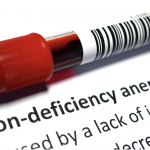Emotional Freedom Technique (EFT) for Children

What is EFT for kids?
Emotional Freedom Technique (EFT) is a form of psychological acupressure that is becoming increasingly popular in the field of complementary medicine. It is a simple, yet powerful technique that combines the principles of traditional Chinese medicine with modern psychology. EFT involves tapping on specific meridian points on the body while focusing on a specific problem or issue to manage the emotional response. This technique has been shown to be effective for reducing stress, anxiety, and depression in adults, and recent studies have also shown its efficacy in children.
EFT for children is a modified form of the technique that is tailored to suit the developmental needs of kids. It involves the use of age-appropriate language and simplified tapping sequences that are easy for children to learn, follow and remember. EFT for children can be used to address a wide range of issues such as stress, anxiety, fear, anger, sadness, and behavioural challenges. Introducing EFT to children can help them learn about and manage their emotions at a young age, building resilience for the future.
Techniques for introducing EFT to children
Teach Kids to Identify Their Emotions
The first step in teaching kids EFT is to help them identify their emotions. Encourage them to express how they are feeling and what they are experiencing in their body. This will help them understand their emotions, developing emotional intelligence, and improving emotional regulation.
One way to help children identify their emotions is through the use of a feelings chart. A feelings chart is a visual aid that lists different emotions and can help children identify and label their feelings. Keep it simple, with 4 feelings options; happy, sad, angry and silly with a visual aid of facial expressions for each emotion (happy face, sad face, angry face and silly face) is a great starting point.
Create a Tapping Routine
Create a simple tapping routine with your child. Start by tapping on the karate chop point (the fleshy part of the hand between the wrist and little finger) while saying a phrase that acknowledges the issue. For example, “Even though I’m feeling worried about my test, I deeply and completely love and accept myself.” Then, tap on the remaining points while repeating the phrase or variations of it.
The remaining points include the top of the head, the beginning of the eyebrow, the side of the eye, under the eye, under the nose, on the chin, and on the collarbone. Each point should be tapped for 5-7 times.
Use Positive Affirmations
Positive affirmations can help boost a child’s self-esteem and confidence. Encourage them to repeat positive affirmations while tapping. For example, “I am capable of handling difficult situations,” “I am loved and valued,” or “I am confident in myself.”
Positive affirmations can also be used to replace negative self-talk or limiting beliefs. For example, if a child has a belief that they are not good enough, they can replace that belief with a positive affirmation such as “I am worthy and deserving of love and respect.”
Incorporate Imagery
Children respond well to imagery, so incorporating visualisations can be helpful. Encourage them to imagine a positive outcome while tapping. For example, “I see myself taking deep breaths and feeling calm during my presentation.”
Visualisations can also be used to help children process difficult emotions. For example, if a child is feeling angry, they can visualise their anger as a balloon and imagine releasing the balloon into the sky.
Focus on Self-Care
Teach children to practise self-care to manage their emotions. This can include activities like taking deep breaths, going for a walk, listening to calming music, or engaging in creative activities.
Encourage children to create a self-care routine that works for them. For example, they can create a calming corner in their room where they can go when they are feeling overwhelmed or practise mindfulness exercises.
Research on the Effectiveness of EFT for Children
Several studies have investigated the effectiveness of EFT for children. A study published in the Journal of Clinical Psychology found that EFT significantly reduced symptoms of anxiety and depression in children under the age of 12. Another study published in the Journal of Traumatic Stress found that EFT was effective in reducing symptoms of post-traumatic stress disorder (PTSD) in children and teenagers.
These studies are exciting because they suggest that EFT is an effective therapy for reducing symptoms of anxiety, depression, and panic. It can also be used alongside conventional treatments (pharmaceutical medicine, naturopathic medicine, and/or talk-based therapies) or as a standalone treatment. For children with less debilitating presentations of worry, stress and anxiety, EFT can help with the development of emotional intelligence and building resilience for the future.
EFT is great for children
EFT can be an excellent tool for helping children to learn about and self-manage their emotions. One of the main benefits of using EFT for children is that it is non-invasive and has no side effects. It can also be used as a standalone therapy or in conjunction with other treatments, and can be self-administered or facilitated by a therapist or parent.
It is a safe and effective tool that can support children in developing a positive self-image, improve self esteem, and improve overall well being. By incorporating tapping routines, positive affirmations to replace negative self-talk, and teaching children to focus on self-care, we can help children build emotional intelligence and resilience for the future.
Additional resources for introducing EFT to children
- “Happy Tapping with Mia and Charlie” by Paula Kennedy – a children’s book that introduces EFT in a fun and engaging way.
- “Tapping for Kids” by Angie Muccillo – a guidebook for parents and caregivers on introducing EFT to children.
- “EFT Tapping for Kids” by Brad Yates – a series of YouTube videos that guide children through tapping exercises.
Reference List
- Church, D., Hawk, C., Brooks, A. J., Toukolehto, O., Wren, M., & Dinter, I. (2013). Psychological trauma symptom improvement in veterans using EFT (Emotional Freedom Techniques): A randomized controlled trial. Journal of Nervous and Mental Disease, 201(2), 153–160.
- Church, D., Yount, G., & Brooks, A. J. (2012). The effect of emotional freedom techniques (EFT) on stress biochemistry: A randomized controlled trial. Journal of Nervous and Mental Disease, 200(10), 891-896.
- Brattberg, G. (2008). Self-administered EFT (Emotional Freedom Techniques) in individuals with fibromyalgia: a randomized trial. Integrative Medicine: A Clinician’s Journal, 7(4), 30-35.
- Gaesser, A. H., & Karan, O. C. (2021). Evaluating a School-Based Tapping Intervention to Reduce Anxiety and Improve Executive Functioning Among Elementary School Students. International Journal of Mental Health and Addiction, 19(3), 920-933.
- Gonzalez, J., Mannion, D., & Stanghellini, G. (2018). Feasibility of Implementing EFT Tapping Within an Educational Setting for Adolescents: A Pilot Study. Journal of Evidenced-Based Integrative Medicine, 23, 1-8.
- Karatzias, T., Power, K., Brown, K., McGoldrick, T., Begum, M., Young, J., & Adams, S. (2011). A controlled comparison of the effectiveness and efficiency of two psychological therapies for posttraumatic stress disorder: Eye Movement Desensitization and Reprocessing vs. Emotional Freedom Techniques. Journal of Nervous and Mental Disease, 199(6), 372-378.
- Stapleton, P., Sheldon, T., Porter, B., & Whitty, J. (2011). A Randomized Clinical Trial of a Meridian-Based Intervention for Food Cravings with Six-Month Follow-Up. Behaviour Change, 28(1), 1-16.
- Wells, S., Polglase, K., Andrews, H. B., Carrington, P., & Baker, A. H. (2003). Evaluation of a meridian-based intervention, Emotional Freedom Techniques (EFT), for reducing specific phobias of small animals. Journal of Clinical Psychology, 59(9), 943-966.
- Wilson, A. N., & Wahbeh, H. (2019). Effects of a 6-week Emotional Freedom Techniques (EFT) group intervention on post-traumatic stress disorder in adults exposed to the 2016-2017 earthquakes in central Italy. Journal of Integrative Medicine, 17(2), 116-123.
- Yildirim, G., & Ataoglu, A. (2021). A randomized controlled trial of group emotional freedom technique for depression in adolescents. Journal of Affective Disorders, 282, 890-898.






